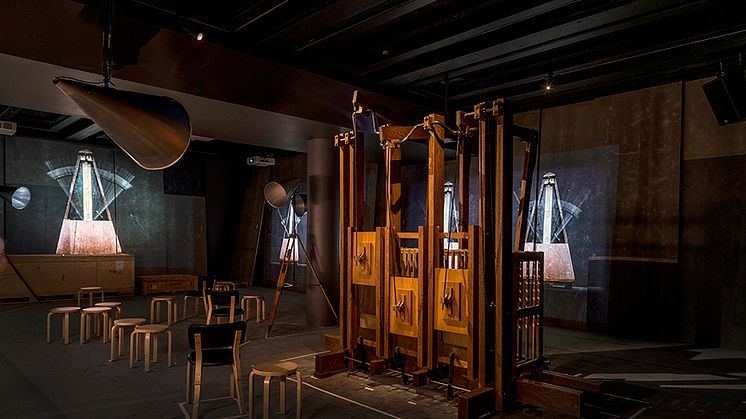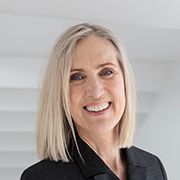
Press release -
Opening at Bildmuseet: William Kentridge / The Refusal of Time
Can we ever truly understand the passing of time in a world in a state of constant flux? As the first art institution in Sweden, Bildmuseet presents William Kentridge's The Refusal of Time. The large scale installation opens on Friday 12 October. Welcome to the press preview on Thursday, 11 October, at 10 am (RSVP).
The Refusal of Time is an evocative meditation on the nature of time. With allusions to Einstein's theory of relativity, to space travel, Plato's Cave and silent movies, William Kentridge has created a touching and imaginative narrative on how we comprehend time. Can we ever truly understand the passing of time in a world in a state of constant flux?
In the installation's five large projections, drawings, animations, photographs, films, poetry and performance are combined. A complex soundtrack from megaphones atop high stands floods the room while, in the middle of the space, a large mechanical construction inhales and exhales in regular, hypnotic breaths.
The Refusal of Time grew out of conversations with Harvard physicist and science historian Peter Galison and encompasses Kentridge’s wide range of artistic practices and visual motifs. Music and soundscape: Philip Miller. Video editing: Catherine Meyburgh.
William Kentridge (b. 1955, South Africa) is based in Johannesburg and is considered to be one of the world's most significant living artists. A scenographer and director of theatre and opera, he is predominantly known for his drawings and animated films. William Kentridge’s mythical and multidimensional works deal with existential, political, and aesthetical questions, often originating in the history of South Africa. Kentridge has exhibited at major international art museums and biennials the world over.
This is the first time that The Refusal of Time has been presented in Sweden. At Bildmuseet, the installation represents a first part of the upcoming exhibition Entangle / Physics and the Artistic Imagination, which opens on November 16.
Press preview on Thursday, 11 October, at 10 am
The exhibition will be presented by Ariane Koek, founder of the Arts at CERN programme at the European Organization for Nuclear Research and guest curator of Bildmuseet’s upcoming exhibition Entangle / Physics and the Artistic Imagination. RSVP 8 October to press officer Helena Vejbrink.
Opening on Friday, 12 October, at 5–9 pm
In conjunction to the opening of William Kentridge / The Refusal of Time, there will be a conversation via Skype between Ariane Koek and physicist and Peter Galison, Harvard University, who collaborated with William Kentridge in developing the ideas behind the exhibition. The Refusal of Time runs until 17 March, 2019.
Further information, please contact
Brita Täljedal, museum curator at Bildmuseet
brita.taljedal@bildmuseet.umu.se, +46 90-786 77 14
Topics
Categories
Bildmuseet exhibits contemporary international art, photography, architecture, design and other forms of visual culture. Existential, political and philosophical issues are key to the programme. Bildmuseet received a Special Commendation from the European Museum of the Year jury, and has been one of the top candidates för the Swedish Museum of the Year Award as well as for the Council of Europe Museum Prize.
Housed in an acclaimed building at the Umeå Arts Campus, right next to the Umeå Academy of Fine Arts, Umeå Institute of Design and Umeå School of Architecture, Bildmuseet is a part of Umeå University – a multifaced university where studies and research within the creative realm make up an important part of the universty's cornerstone. It is one of Sweden's largest institutions of higher learning with over 32,000 students and 4,200 employees.

